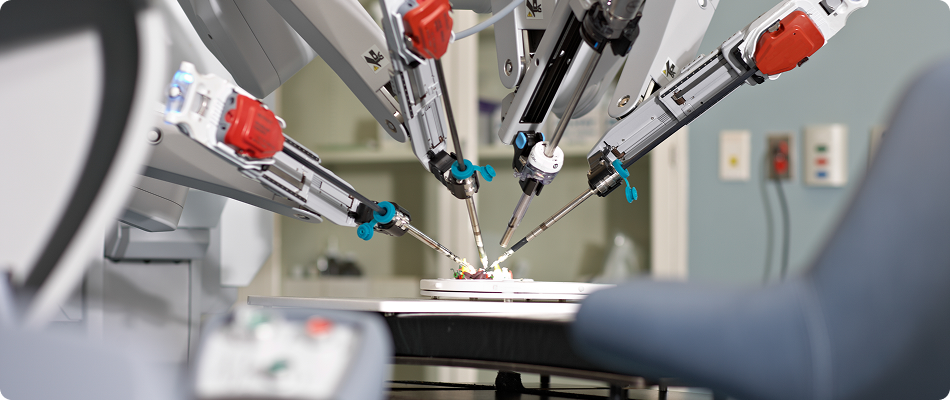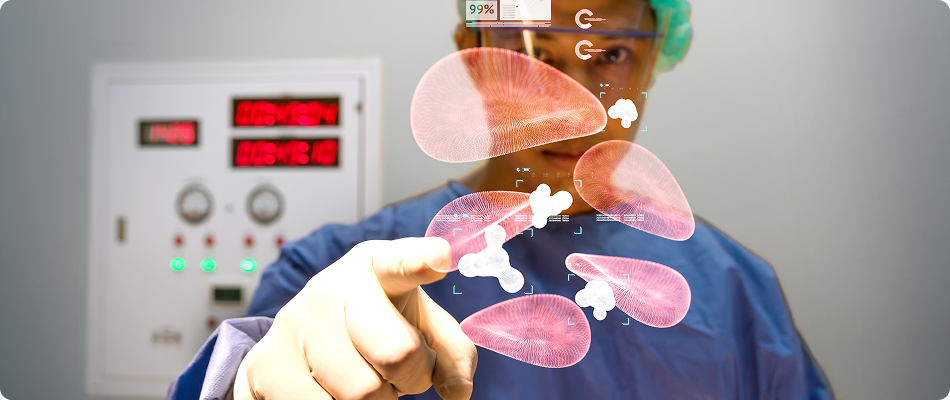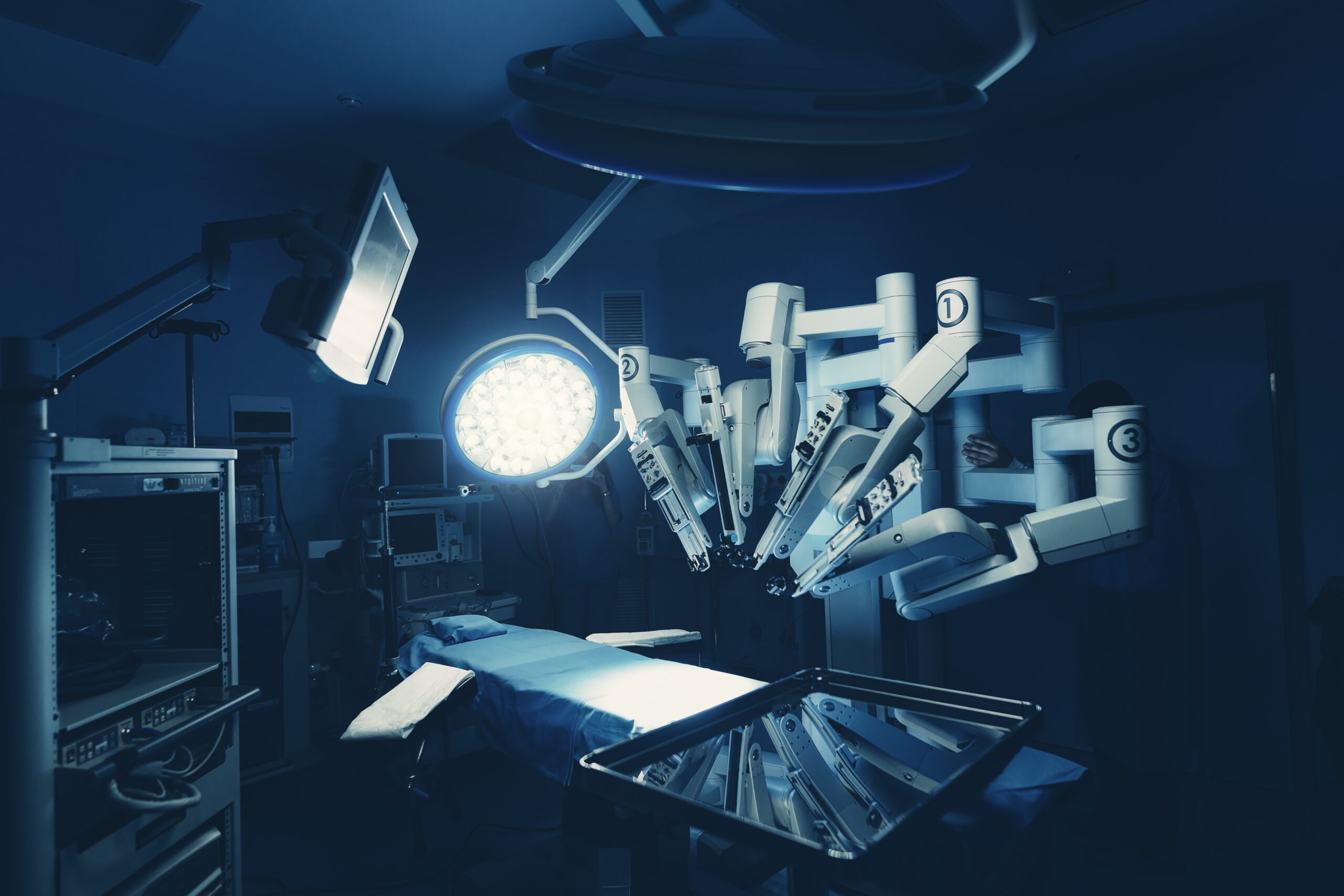Robot-assisted surgery has firmly cemented its place in the modern operating room. What began as a niche innovation is now a cornerstone of minimally invasive procedures, offering surgeons enhanced dexterity, precision, and visualization.
A few years ago, Springboard, a Sanner Group Company’s Principal Physicist, Joe Batley wrote about the trends he is seeing in the field. Today, we look at what is next and if there is still appetite for his predictions from 2023.

Miniaturization is still enabling incredible innovation
As was the case in 2023, robotic systems like Intuitive’s da Vinci have dominated general and laparoscopic surgery. But the future is getting smaller and more focused. Developers are now racing to miniaturize surgical tools and create systems tailored to specific procedures. Think single-port access, ultra-fine instruments, and robots designed for rigid-endoscopic or microsurgical tasks. One noteworthy surgical device is the Endomag surgical device used in breast cancer detection where the surgical probe is much smaller than originally designed which helps the surgeon using it to precisely pinpoint the cancer cells allowing for a smaller surgical region.
Companies like Virtuoso Surgical and Vicarious Surgical are leading the charge, developing compact systems that can navigate tight anatomical spaces with unprecedented precision. This shift toward specialization not only expands the range of procedures that can be robotically assisted but also makes advanced surgery more accessible in smaller hospitals and outpatient settings.

Surgery with data at your fingertips
What if we could understand the risk of complications (namely infections) from surgery before, during, and after a surgical procedure? That is exactly what startup company, Caresyntax, is doing. By leveraging video, device telemetry, vitals, and historical patient records, Caresyntax’s platform can predict patient risk factors and complications. With millions of past procedures in its database, this platform then alerts surgeons and clinicians to patients at higher risk for surgical site infections or adverse events.
In many cases, surgery is an urgent matter, and hospitals can quickly become overwhelmed when multiple procedures overlap or resources are stretched thin. Surgical Safety Technologies (SST) is a startup creating a black box for the operating room. This platform addresses this challenge by capturing live OR data to predict procedure durations, staffing needs, and potential inefficiencies. This helps hospitals reduce idle time and streamline workflows without adding new resources.

Robots are becoming second nature to surgeons
While the technology behind surgical robots is complex, the user experience is trending in the opposite direction. Intuitive interfaces, haptic feedback, and smarter voice-controlled systems are making it easier for surgeons to adopt and master robotic platforms. Training times are shrinking, and confidence is growing.
On social media platforms like Instagram and TikTok, surgeons are sharing videos showcasing their skill with these multi-million-dollar robotic systems. For example, Dr. Nangeroni, DO, from Southern Ocean Medical Center in New Jersey, demonstrates remarkable precision and control by performing fine motor tasks with the robot. See how intuitive and responsive the technology has become.
For system designers, this focus on usability is critical. As robotic systems become more widespread, they must be accessible not just to elite surgical centers but to community hospitals and ambulatory surgical centers as well.
Distalmotion is a great example of building “usability” or adoption into their system. Dexter’s uniqueness lies in its hybrid design, cost-effectiveness, and compatibility with existing laparoscopic setups, making robotic surgery more accessible and flexible compared to da Vinci’s fully robotic, higher-cost model.
Human-centered design is not just about aesthetics. Instead, human-centered design is about safety, usability, and empathy. By integrating contextual research, task analysis, and iterative usability testing throughout the development process, engineering teams can make intuitive products that are much more likely to be adopted by users.
Looking ahead
The trajectory of robot-assisted surgery is clear. Technological advancements bring greater precision, smarter solutions, and wider accessibility.
As we look to the future, the challenge will be for product innovators to balance these improvements with affordability and proof of impact to the healthcare systems they exist in.
In the United States, roughly 80% of surgeries are considered elective. Because these procedures are planned rather than urgent, hospitals and payors can carefully evaluate which technologies to adopt. This means surgical innovators are competing not only on clinical performance, but also on the value they deliver to all stakeholders: patients, providers, and payors.
About the Author
Michael Denver is a business development professional with over 15 years in the medical device industry and an MBA from the University of Manchester. He currently helps medical device companies at Springboard Pro, a Sanner Group Company, bring innovative technologies from concept to market.

